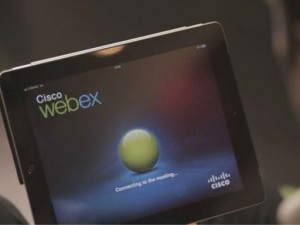Cisco Systems is extending the functionality of its Quad enterprise social networking (ESN) software through integration with Microsoft Office applications and with email clients, including Microsoft Outlook, the company is announcing on Tuesday.
 Cisco is also re-branding the ESN software, dropping its Quad name and calling it WebEx Social, as the company seeks to give its social collaboration products a uniform brand using the WebEx name.
Cisco is also re-branding the ESN software, dropping its Quad name and calling it WebEx Social, as the company seeks to give its social collaboration products a uniform brand using the WebEx name.
“Creating a consistent [collaboration] brand and experience under WebEx is a necessary thing for them to do,” said industry analyst Zeus Kerravala, founder and principal analyst at ZK Research.
Cisco is also placing under the WebEx umbrella its Callway cloud-hosted telepresence service, the original WebEx online meeting and Web conferencing service, and the cloud-based Connect IM and presence service. Callway will now be known as WebEx Telepresence, while WebEx will be called WebEx Meetings, and Connect is being renamed WebEx Messenger.
“There’s no doubt that Cisco had too many [collaboration] platforms. That’s how they grew the business, through acquisitions,” Kerravala said.
WebEx Social, like other ESN applications from companies like IBM, Jive Software, Tibbr and Yammer, lets organizations offer their employees Facebook-like and Twitter-like functionality but adapted for a workplace setting so that they can, in theory, communicate and collaborate more effectively.
ESN software is designed to complement traditional workplace communication and collaboration tools, like email, IM and Web conferencing with employee profiles, activity streams, microblogging, discussion forums, wikis, brainstorming software, recommendations, ratings, joint document editing and annotation, tagging and links.
Interest in ESN software has been growing in recent years, and Forrester Research recently forecasted that spending on these products will grow at a compound annual growth rate of 61 percent through 2016, a year in which this market will reach US$6.4 billion, compared with $600 million in 2010.
Kerravala predicts that ESN will be one of the biggest trends in IT over the next five years. “It will change the way people work,” he said.
ESN will be used for many communication and collaboration tasks for which email is ineffective. “It will create a much more interactive way of working than what you have now with email,” he said.
Cisco, which is making the announcement at the Enterprise 2.0 conference in Boston, will now let WebEx Social users collaborate on, share and jointly edit Word, PowerPoint and Excel documents.
In addition, users will be able to perform certain WebEx Social actions, like creating, emailing and posting updates to their activity streams, from within Microsoft Outlook and SMTP-compliant email clients.
Cisco is also enhancing the WebEx Social iPhone and iPad applications, adding IM presence and communications, click-to-call capability and the ability to start a WebEx meeting.
The integration with Office is significant, according to Kerravala. “That extends presence all the way down to the document,” he said.
While Cisco’s collaboration products have traditionally been focused on real-time communications, this gives users a stronger set of capabilities for collaborating on documents, he said.
“If you make the user smarter about what documents people are using, what their status is, where they are in the editing process, then people can make more informed workflow decisions,” he said.
From WebEx Social, users can engage in HD (high-definition) video-conferencing sessions via a Web browser window.
Cisco is also adding the options of licensing WebEx Social as cloud-hosted software either by Cisco or its partners, whereas before the application had to be installed on customer premises.
For enterprise developers, Cisco is also making available a new SDK (software development kit) for them to integrate WebEx Social features into third-party business applications.
The upgraded WebEx Social on-premise server will be available worldwide in July, while the WebEx Social cloud-hosted service will be available in North America in July. WebEx Social on-premise server is sold on a per-user perpetual basis and priced at US$199 per user, while the cloud-based version of WebEx Social starts at $120 per user, per year.
The Callway telepresence service, now known as WebEx Telepresence, is also getting upgraded with new features including the ability to host a video session with up to nine users on the Cisco network with high-quality audio and HD video. It also features a new management portal for administrators to centrally manage user subscriptions and contact lists.




